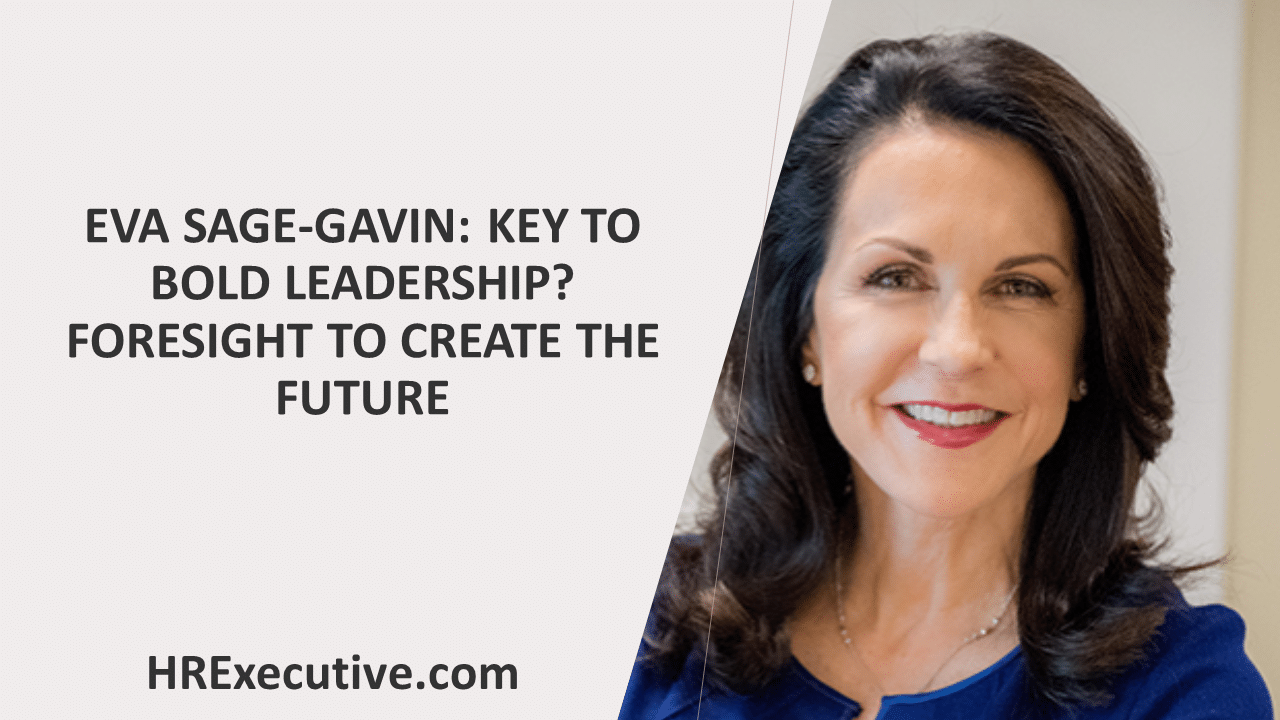No one is immune to burnout. This includes human resources professionals.
Beyond the day-to-day job, HR must enable the organization to foster innovation, advance in diversity, equity and inclusion, as well as drive change management, communications, recruitment at all levels and on-boarding/reboarding. Not to mention employee relations matters such as optimizing hybrid work, designing return-to-office policies, orchestrating the company’s response to significant societal or political issues, managing reductions in force, and supporting a merger or acquisition—often at a moment’s notice.
Without question, the disruptions of the past two years have heightened HR’s strategic role. In our reshaped business world, all of these (and more) are what HR does. But at what cost?
The severity of burnout within the HR function is real and poses a very real threat to organizations’ ability to execute their business strategies.
In the fall of 2021, the Institute for Corporate Productivity (i4cp), a global human capital research firm, surveyed 122 senior-ranking HR executives from organizations with 1,000 or more employees and asked about the most significant barriers to HR functions’ ability to deliver on strategic imperatives and objectives. Burnout of HR employees (60%) and outdated/insufficient HR systems and technologies (56%) were the top two responses.
 Importantly, i4cp analysis also revealed that outdated/insufficient HR systems and technologies are predictors of overload or burnout risk among HR employees.
Importantly, i4cp analysis also revealed that outdated/insufficient HR systems and technologies are predictors of overload or burnout risk among HR employees.
Given the burden of responsibilities that have fallen on HR’s shoulders over the past few years, it’s no wonder HR professionals are both burned out and stressed out.
According to Human Resource Executive’s 2021 What’s Keeping HR Up at Night survey, 86% of HR executives said their stress increased in the last year; 44% said their stress levels increased “dramatically.” Another 2021 survey by business services firm Paychex reported that 70% of 1,000 polled HR professionals said the past year had been one of the most stressful of their careers.
All of this points to a looming HR exodus, and recent data from LinkedIn’s Workforce Confidence Index provides additional clarity as to why. The top five responses among surveyed HR professionals who indicated they plan/hope to leave their current jobs in the next six months were: better compensation and benefits, new opportunities that better align with their interests and values, opportunities to move up, more flexible working hours, and more flexibility in work location.
Now is the time to address HR burnout by putting into practice workload and work balance strategies that HR professionals often advocate to other organizational stakeholders. Consider taking immediate action on the following:
- Provide flexibility and trust your team. Your HR staff doesn’t differ from your workforce in general: Regardless of generation, HR professionals want flexibility and autonomy in work. As highlighted in the i4cp report Flexibility or Flight: Hybrid Strategies to Attract and Retain Talent, employers should maximize and broaden their use of flexibility. Yes, there are specific reasons for your HR staff to work on-site at a company location at given times. But there is also work that needn’t be done at a specific time or place. Flexibility in where, when and how work can be performed will go a long way toward helping alleviate burnout and undesired attrition of your HR team. It will also help build and strengthen trust. Micromanagement—the antithesis of trust and agility—must be avoided.
- Re-assess and clarify the mission/vision of the HR function. Why does HR exist at your firm? How is it viewed by those in the function, your broader workforce, line leaders, the CEO and the board? In what ways should HR be relied on to service and support the business? How (or on what topics) should HR be expected to lead with insights and recommendations? The answers to those questions must align with the interests and capabilities of your HR team and the programs to support them.
- Connect HR to a bigger purpose. The why (or purpose) of work is incredibly important and must resonate with those you seek to attract and retain in your business and your HR function. With a heightened focus for many on more purpose-driven lives, HR professionals (perhaps, especially) want to feel that their work is making a difference within, and outside, the organization. Active investments in corporate social responsibility; environmental, social and governance (ESG) issues; and sustainability that includes volunteering and matching programs can provide HR teams with a lift in engagement and community involvement.
- Re-examine HR’s priorities and initiatives, and actively manage key interdependencies. To those in HR, everything in the workflow may seem critical. However, it is necessary to avoid automatically agreeing to take on new initiatives or expend additional resources without first asking, why are we doing this?
- Ensure clarity about business and/or workforce-related outcomes (e.g., engagement, retention, etc.) to which each HR initiative aligns. Also, don’t allow complementary initiatives to exist in silos. For example, company ABC has three distinct initiatives: Refresh the employee value proposition (EVP), establish a differentiated development strategy, and improve the company’s brand. While each may have distinct project plans and teams, the second (a differentiated development strategy) is clearly a primary element of the first (a refreshed EVP). Both are instrumental in influencing how customers, employees and prospective employees perceive the organization (i.e., shape its brand). Developing one without focused consideration of the others is a missed opportunity and may also confuse or disenfranchise your team as well as the business.
- Reimagine the work—and how the work is done—within HR. What are the tactical and strategic work components that comprise each role in HR? For example, the HR business partner role. What types of work and projects typically require the HRBP’s time? Which of those work components are tactical in nature? Could those be accomplished by automation, a junior-level staffer or administrator, outsourced or contracted? What percent of time each week does the HRBP allocate to servicing the demands of line leaders instead of truly partnering with those leaders to identify issues and opportunities and recommend guidance and solutions? The i4cp guide to HR Capabilities in the New Era of Work created jointly with Professor John Boudreau and Peter Ramstad, provides helpful details. The efficiencies enabled by adopting more technology can relieve some day-to-day burdens and empower more constructive HR and manager/employee interactions.
- Make it safe for HR teammates to raise a red flag or speak up. i4cp research in partnership with Professor Rob Cross (How to Avoid Collaborative Overload) revealed that high-performance organizations were 3.5x more likely than lower-performing firms to encourage individuals to report their own collaboration problems (e.g., someone who is part of an increasing number of workstreams or projects and facing looming collaborative overload). Other i4cp/Rob Cross research (Next Practices in Holistic Well-Being) revealed a similar next practice: encouraging employees to report concerns about the emotional wellbeing of themselves and others—a practice in place at 4x more high-performance organizations than low-performers. Comfortably setting the appropriate boundaries is likely to produce higher quality and impact of HR service levels.
- Learn, leverage and advocate for HR technology—don’t fear it. Find technologies that could work in your organization and pursue them. Work with your information technology team and build your vision board of technology. HR must embrace the ethos that artificial intelligence (AI) and other advanced work automation will make the HR function (and those HR supports) more productive and able to deliver faster. The 2022 joint i4cp/Fortune study, The Talent Imperative, found that survey respondents who acknowledged that their HR systems were outdated or insufficient were nearly 7x more likely to cite burnout as a barrier to HR’s effectiveness. For more on what to do, read the i4cp article Beat Burnout by Investing in HR Technology and Automation. While leveraging technology to enhance all relevant workflows is key, so is ensuring that it’s grounded in keeping the human in human resources.
- Prioritize you. If you’re an HR professional, find the time to take (and actually do take) paid time off (PTO). Enjoy your people, a hobby, or just take a walk. Focus on your family, friends, pets, music, art, volunteer, or sit and just be still. Take baby steps toward creating the right mental space to enable yourself to be even more productive, innovative and happy. Work with your team members to cover for one another and make time off possible for all. The joke within HR circles that PTO means “Pretend Time Off” must end. HR must model the way.
- Laugh. Have you ever started a meeting with the words “You cannot make this up?” Lighten the room, virtual meeting place or call. Operate from the perspective that you have the right tools and resources to approach whatever comes your way, and you will get through it. If you cannot, then perhaps you’ve stumbled on a talent or resource issue, and that can open truly candid dialogue about business and team needs.
Conclusion
In two recent Fortune studies (a CEO study in partnership with Deloitte and an HR leader study in partnership with i4cp), the issue that study participants perceived as posing the greatest disruption to their organizations in 2022 was the labor/skills shortage.
 On its own, a labor/skills shortage is daunting. However, imagine how much more daunting and disruptive it will be if the very people CEOs and line leaders rely on to address talent retention and attraction needs (i.e., HR professionals) are no longer available because they’ve quit or are burned out.
On its own, a labor/skills shortage is daunting. However, imagine how much more daunting and disruptive it will be if the very people CEOs and line leaders rely on to address talent retention and attraction needs (i.e., HR professionals) are no longer available because they’ve quit or are burned out.
“Put your own oxygen mask on first.” Over the past two years, that statement (one likely heard in pre-pandemic years only by airline passengers) has been the dominant message shared with i4cp by HR leaders when asked for advice they’d give their peers.
In this age of unprecedented HR burnout, the advice remains spot on.
The post 10 things to do right now to prevent a looming HR exodus appeared first on HR Executive.